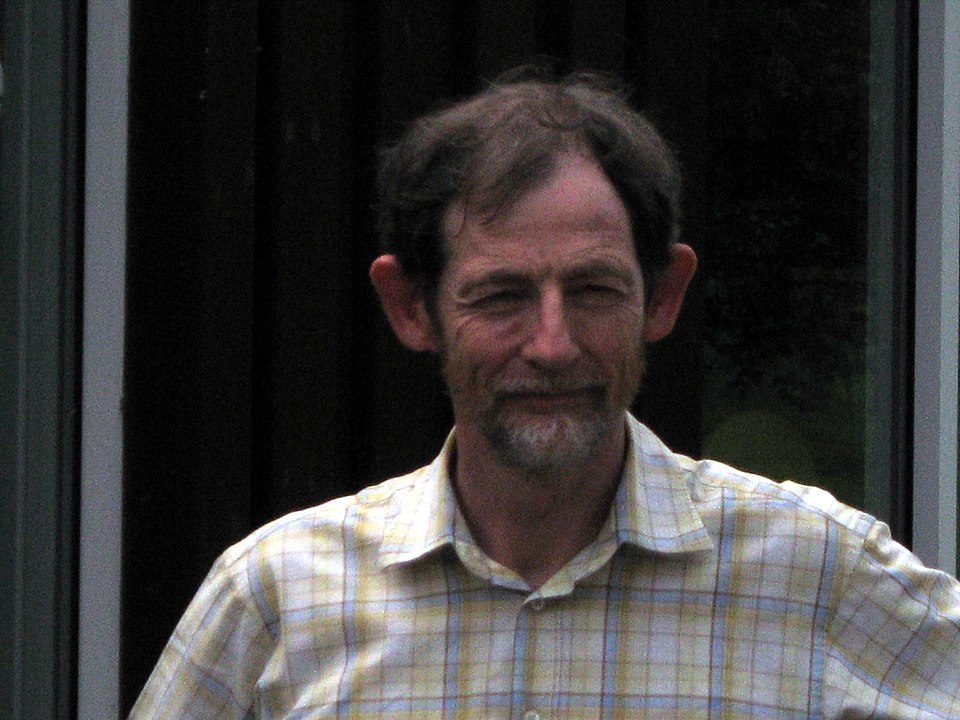Image: Sir John Ball, Sedleian Professor from 1996-2019
For the past 400 years, Oxford University has had an endowed chair of natural philosophy. It began in 1621, due to a bequest by Sir William Sedley. This book celebrates the history of the Sedleian Chair, which “arguably has had the most interesting and varied development of any such professorship.”
The book is really a pair with one on the 400th anniversary of the Savilian Chair of Astronomy and Geometry at Oxford, found in 1619 by Henry Savile.
This title is edited by Christopher D. Hollings (Univ. of Oxford) and Mark McCartney (Ulster University). They have teamed up with 9 other scholars to explore the life and careers of the 19 men who have held the Sedleian Chair.
While prestigious now, it has not always been held in such high esteem. In the 1850s, the geologist Nevil Story Maskelyne told a Commission established by the UK government the Sedleian Professorship as “practically obsolete.” Why this was so is ably explored in the early chapters. The first few holders of the Professorship were medical doctors, in an age when medicine was scarcely different from what was known a thousand years earlier. One holder of the Sedleian chair, from 1660-1675, was Thomas Willis. He believed that “waste from brain activity is removed through sleeping with the mouth open and yawning to allow ‘soot’ to escape through the breath.”
The next century was scarcely better. Consider, for example, Joseph Browne, who was appointed in 1741. “Browne was not much of a scholar,” writes Nigel Aston (Univ. of York). Over a period of 20 years, there was only a single hint in the records “that he may have been interested in fulfilling its original job description.” He actually “quit residence in Oxford” to become a rector in Hampshire. Indeed, many of these so-called professors of the 18th century were primarily interested in holding positions in the Church of England, and contributed little or nothing to the study of natural philosophy.
The die was cast for the 18th century at its outset. A real natural philosopher (or scientist, as we might say now), John Keill, “was not appointed in 1704, and the opportunity was lost to make the Sedleian Chair consonant with cutting edge scientific proficiency within the university.” The post went to James Fayrer, a theologian “known for lechery and laziness.” After 16 years of this, the post went to Charles Bertie. To label him a ‘natural philosopher,’ writes Aston, “would be stretching the term to breaking point.” Six years afterwards, Bertie set his hat on becoming Warden at All Souls. When he did not get it, he “went off in a huff, taking holy orders, resigning his fellowship, quitting Oxford, but not resigning the Sedleian Professorship until 1741,” just a few weeks before he died. Even while resident in Oxford, he had never lectured, but he would not relinquish its income until the bitter end!
The original mandate of the Chair included the teaching of Aristotle, but as the work of Newton became accepted during the 18th century, the concept of natural philosophy itself shifted. Unfortunately, the four Sedleian professors from 1704 to 1782 were not mathematicians. Things improved when Thomas Hornsby held the post from 1782 to 1810; he had already held the Savilian Chair from 1763, and was a noted astronomer, being in charge of Oxford’s Radcliffe Observatory from 1772. He “was enthusiastically committed to natural philosophy as experimental practice, the creed that was taking hold throughout Europe and beyond,” writes Jim Bennett (Keeper Emeritus, Science Museum, London). By 1782, Hornsby “had been the most active teacher of natural philosophy in the university for many years.”
His successor, George Leigh Cooke held the Chair for an astonishing 43 years. He was primarily a clergyman, and even the author of the chapter about him, Prof. Hollings, admits Cooke’s teaching as Sedleian Professor “is rather difficult to trace, and indeed may not have been particularly extensive.” It was at end of his tenure that Maskelyne delivered his damning verdict on the Professorship. Cooke was succeeded by another long-lived tenant of the Sedleian. Bartholomew Price held the post even longer: 46 years! Hollings also writes the chapter on Price, who “maintained his teaching right up to the point of his retirement from the Sedleian Chair at age 80.” Price wrote several important books on calculus. For Price, “mathematics was an end in itself.” Hollings writes that “Price broke the Sedleian chair from its parochial origins.”
Since then, 7 men have held the post, the current occupant being Jonathan Keating, who took over in 2019. The chapters covering the 20th century are naturally much more technical than previous chapters. Topics of applied mathematics that interested the professors are described in some detail, such as the theory of uniform gases and geomagnetic storms (Sydney Chapman); quantum mechanics (George Temple); theoretical elasticity (Albert Green); fluid mechanics (Brooke Benjamin). The final chapter is an interview with John Ball (Sedleian Professor from 1996-2019), and the only former incumbent still living. His D. Phil. was in mechanical engineering.
As a historical document of one of the world’s leading endowed chairs, this book is faultless. Historians of different time periods will each find a wealth of information, but not only on those who held the Professorship. The broader remit established by the editors was just the right approach, so we get a fine sense of the state of mathematics and natural philosophy through four centuries.
The book is well illustrated; there are 68 pages of notes and references, followed by a fine Index.
Oxford’s Sedleian Professors of Natural Philosophy: The First 400 Years. Published by Oxford University Press, it lists for $125.
Image: This file has been extracted from another file
: Halls and celebrated members of the academic staff of Pembro Wellcome V0014743.jpg
